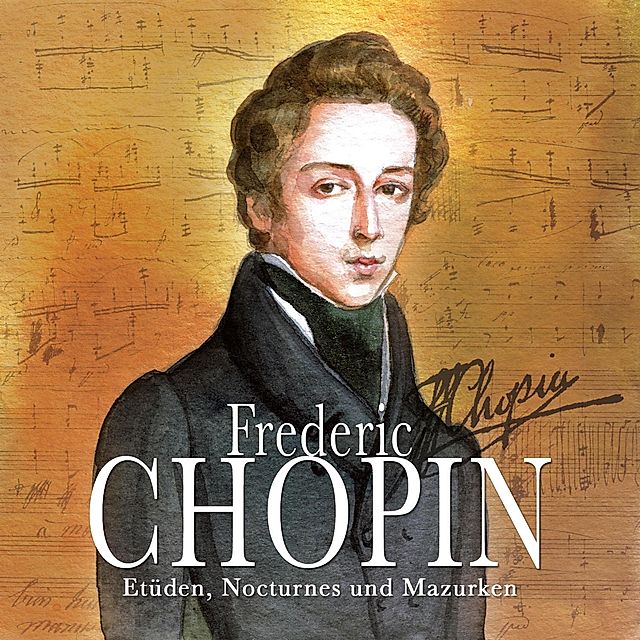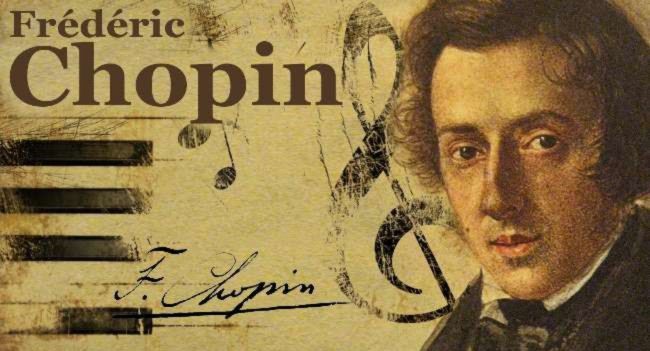In contrast to the etudes of previous periods, where the music only focused on developing and practicing playing techniques, the etudes in the romantic music period such as those of Chopin or Liszt are works of art, condensed from many different emotions. These are radiant poems, dream-like and real images, to quietly admire, to keep for yourself.
Chopin’s 27 Piano Etudes target one or more difficulty levels of the instrument. However, for talented pianists of that time, controlling finger technique was never the goal of playing Chopin’s works. It is just an excuse, or more accurately, a means of expressing lines of musical poetry.

This Etude set is divided into two volumes, opus.10 and opus.25, including 3 new Etude pieces written specifically for piano textbooks. Each Opus volume includes 12 lessons. A large part of opus.10 was composed before Chopin moved to Paris. As a famous piano professor, Chopin sometimes used his works to teach students. Therefore, it is not surprising that he wrote so many Etudes for piano.
The twelve Etudes in Chopin’s volume op.10 are not just simple finger exercises for a specific technical point, but also twelve sublime sound paintings.
During his lifetime, Chopin never intended to name specific musical images for each of his brainchildren. However, each drop of sound, each idea of his music always makes the listener feel like looking at a painting, reading a poem, or relating to a certain artistic image. In other words, he has a very unique sound, a language condensed from his heart’s desire for love and an elegant soul called Chopin.
Version N°4 (op.10) called Floodwaters focuses on the technique of moving the thumb on the black keys, as well as the agility of the fingers at extremely fast speeds. This song is in the first volume that Chopin dedicated to Liszt, the famous Hungarian pianist who was making waves at that time. The melody Rushing Flood is played alternately from the right hand to the left, as if a constant confrontation between fire and water, between light and dark, and between good and evil.
If Etude No. 4 is a fierce waterfall, Etude No. 5 (Op.10) is a stream sparkling with sunlight. Titled On the Black Key , this work was a challenge to the artists: the right hand must play only on the black key (except for a note on the white key in bar 66), because Chopin wrote it in the key of So-flat. major (6 flats), runs on the chord base in the left hand. This is one of the favorite jewelry of most professional and amateur pianists. This item makes them forget the feeling of having to conquer the finger running technique, but is simply like a child’s game of following the quick, mischievous strokes of ten fingers.
One of the only two slow Etudes by Chopin, it is impossible not to mention the deeply beautiful melody in song number 3 (opus.10), also known as Etude of Sadness . This title was named by one of the publishers of that time. When the first notes of Sadness sound, few people think that it is first and foremost a finger exercise: priority is given to training the independence of each finger, each hand playing two different parts. Sadness is written in three sections: sections 1 and 3 are lyrical ballads, heavy with melancholy, section 2 is a section that develops both melody and technique, where the emotions become fuller and more tormenting. and harmonious colors are more intense and motivating.
And those narrative lines of sadness have touched the souls of many generations, so later on the melody was put into lyrics and adapted by many artists for vocal music. For example: Albert Valentin wrote lyrics in French called Mon cœur vous dédie sa mélodie for the movie La Chanson de l’adieu . In 1939, singer Tino Rossi presented it with the song of the same name Sadness , lyrics Loysel/Marcuse. In cinema, many films also use this melody such as: La Chanson du souvenir (1945), Un été italien (2008) and The Master (2012)…
Etude Revolution No. 12 (op.10) is one of the famous piano works of all time. Because in part, the music is associated with a historical event: the defeat of the Polish people against the invading Russian forces in November 1831. Due to poor health conditions, Chopin was unable to participate in the battle. this war. Frustrated, lonely and helpless, he used music as a weapon, pouring all his emotions into stormy runs (this part was performed by his left hand).
Amidst the fierce scenes of war, amidst the rumbles of bombs and bullets, the chaotic and booing sounds of people, a patriotic song rang out, boldly and defiantly. Chopin put all his love into that tragic melody, embroidered into the series of chords in the right hand. The Etude Revolution is an inner storm and music is the only confidant that helps Chopin overcome the pain of losing his homeland.
The formidable difficulty of the Etudes, which Chopin placed in the hands of his good students, could not prevent the music from resounding. They are known more as a masterpiece of art than a common finger exercise. Each Etude is a poem, a painting, a story created by musical notes from the heart. It is pure music beyond the constraints of mere virtuosity.
The twelve Etudes in Op.25 that Chopin dedicated to Marie d’Agoult, his soon-to-be wife, once again demonstrate the talent of writing poetry with music of the outstanding Polish musician.
This volume opens with Etude No. 1 (op.25) The Stream, also known as the Etude of the harpe , with countless blurred harmonies. Here Chopin wants to prioritize the technique of playing arpeggios in parallel with the rather uplifting melody in the right hand. According to Schumann, the German romantic composer, when a piece of music ends, we feel like we have just seen something half-real, half-real, running away without us having time to catch it.
Consolation – No. 2 in F minor (Op.25) which Schumann called “ the song of a sleeping child ”. Under the floating stroke of the treble rhythm, gentle notes drift into the baby’s sleep. Like other Chopin Etudes, this piece is one of many frequent selections in concert programs. Because it is the perfect fusion between artistic elements and technical challenges.
Etude No. 5 (Op.25) is sometimes called Error Notes , because the harmony of this étude has many dissonant sounds intentionally introduced. The work has two contrasting parts: the first part has a lively rhythm and many notes, bringing the listener back to childhood memories, the radiant faces of children playing. The second part, the poetic melody (in the left hand) on the long, wide stroke (in the right hand), is a windy field, a distant horizon, filled with many bright, youthful dreams.
Sometimes it’s as thin as smoke, sometimes it vibrates with happiness, sometimes it’s as pure as crystal, otherwise it’s noisy and busy . All are contained in Etude No. 6 (Op.25) in G-sharp minor, also known as Etude Third . Throughout the entire work, the left hand runs thirds sometimes in chromatic scale and sometimes in diatonic scale. The difficulty here is how not to get confused between the two types of scales and how to use your fingers appropriately for each scale. Meanwhile, the right hand hums a country tune: an impromptu dance on the prairie will let go of daily burdens and worries?
A quiet spot in the oasis of Chopin’s poem, song number 7 (op.25) sounds like a slow, dark nocturne. Nostalgia for the homeland with painful counterpoints and sad words pouring out from the fingers on the ivory keys. This piece of music is sometimes called On the Cello , because of the narrative melody written on the lower notes. Some later musicians adapted it into a duet for cello and piano. Although it has a nocturne feel, it still retains the function of an étude, allowing the artist to practice the technique of playing polyphonic music, counterpoint alternating with some other virtuosic features.
Butterfly Wings is the name of Etude No. 9 (op.25), a fast and gentle piece of music that is most popular. The technical difficulty of this song lies behind the 2/4 time signature, in which the right hand plays chords without stopping, alternating with octaves, sometimes pressing, making sounds (légato), sometimes bouncing fingers. (staccato). Therefore, to conquer this version, players must practice special softness and flexibility in the wrist to reach the point where when the sound escapes, it sounds like delicate butterfly wings fluttering and perching. then flew again among the green grasslands. Another interesting thing that not everyone knows, whether by accident or on purpose, Chopin’s musical motif Butterfly Wings seems to have the same inspiration as the composer’s Sonata in G major, movement 3, opus 79. Beethoven.
Chopin never had a poetic work in mind when he started composing it. However, every musical note, every musical phrase that sounds is a beautiful poem. Whether sad or happy, whether tears or laughter, those pages of poetry always follow the world, to comfort, to coo as our companions in this life.
